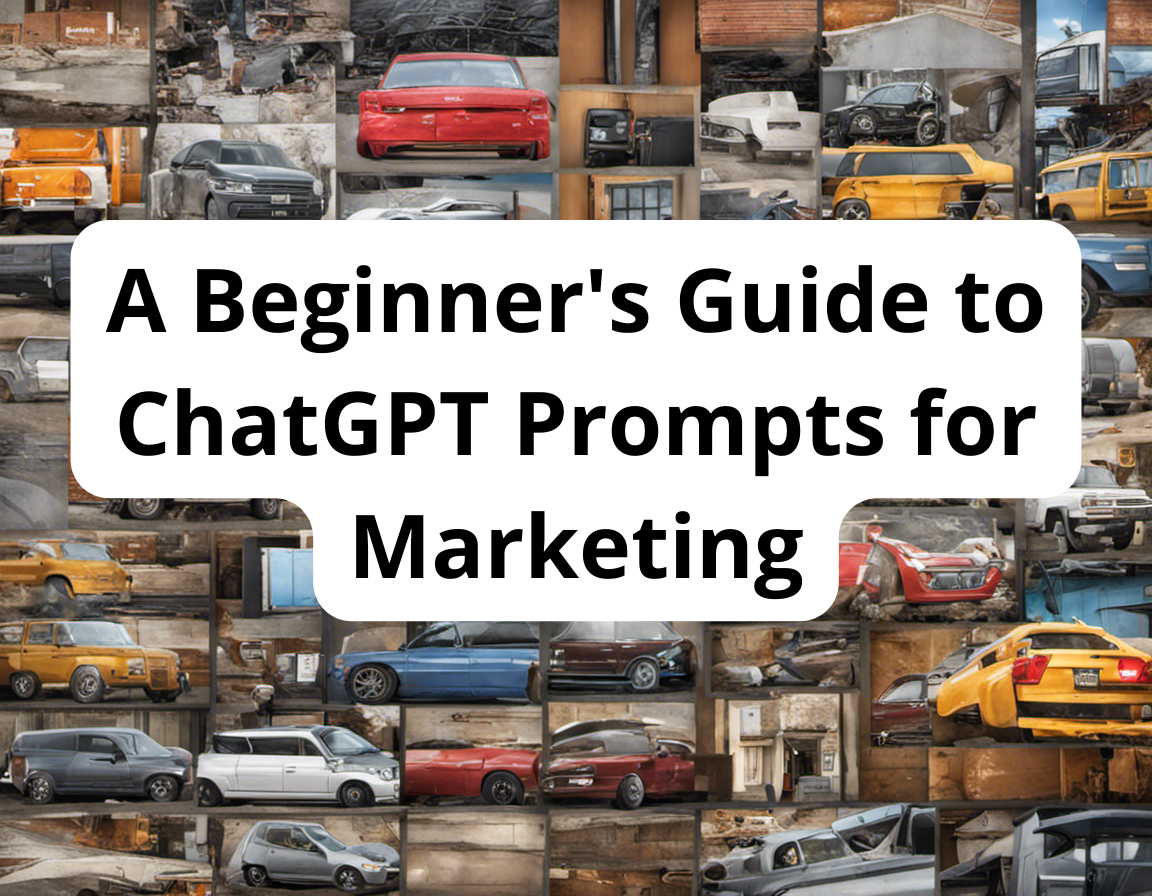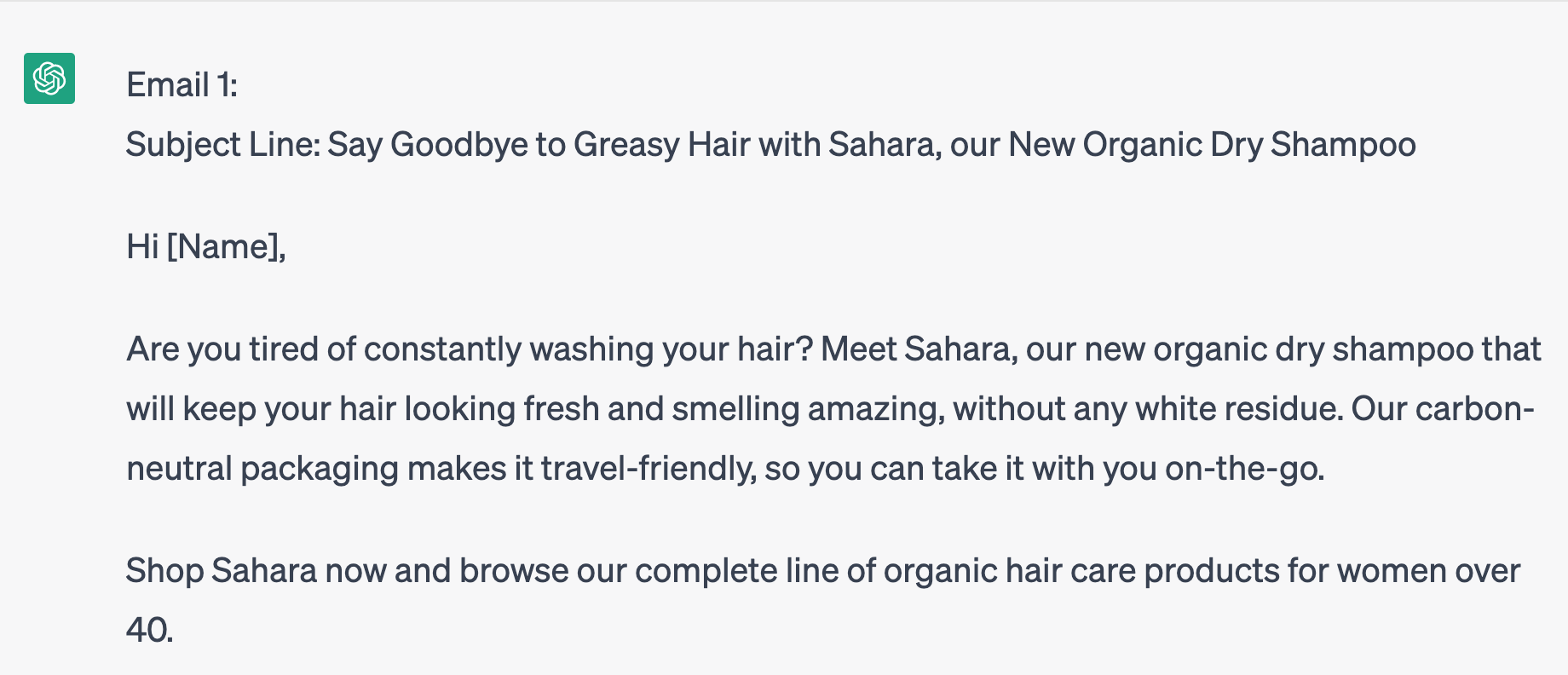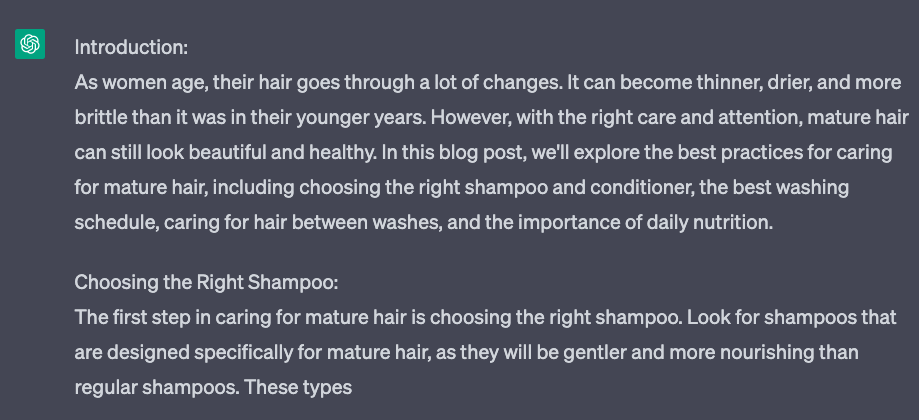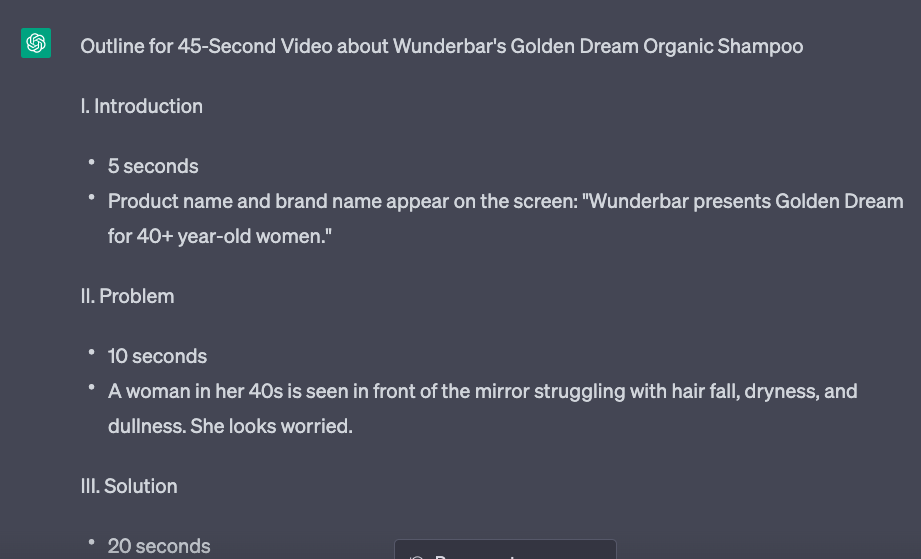
ChatGPT has taken the world by storm, and for those who work in marketing, the applications only continue to grow. We’ve written various articles on understanding and getting started with the tool, but in this article, we’ll tackle how to use ChatGPT specifically for marketing tasks in this article.
If you’re curious and want to learn more, you can check out these resources to get a basic understanding of GPT: our Beginners Guide to GPT-3, our Intro to ChatGPT course, and our Guide to Using ChatGPT for Data Science Projects.
When ChatGPT was first released in late 2022, many writers, marketers, and advertisers felt fear. Could a language model eliminate the need for a human voice? But as companies and media professionals have taken a chance on the technology, it’s become obvious that, instead of a threat to professions, ChatGPT is a tool that can scale marketing efforts tenfold.
If you’ve already begun experimenting with ChatGPT, you know the massive difference a well-written prompt can make in the response. Since ChatGPT has been fed (“trained on”) massive amounts of information, you have to be very specific with what you’d like it to do, or you run the risk of making more work for yourself. You can learn more about ChatGPT prompts in our cheat sheet.
For example:
The prompt, “Tell me more about AI,” will render a paragraph of text explaining different areas of artificial intelligence. While “Explain artificial intelligence to a 5-year-old in 2 sentences” specifies the exact outcome you hope to see for your audience.

We’ll explore more ways you can write effective prompts for all parts of your marketing workflow below!
General Tips for ChatGPT Marketing Prompts
Before we get into specifics, here are some points to bear in mind when creating prompts for ChatGPT.
Be clear and concise: Make sure your prompt is easy to understand and doesn't contain any unnecessary information. Try to keep it short, but provide enough context for the model to understand your question or request. Start by telling it the function you want it to serve and what you want it to achieve.
Be specific: Specify the information or format you want in the response, as this will help guide the model to produce the desired output.
Avoid ambiguous language: Ensure that your prompt is not open to multiple interpretations, as this may lead to unclear or inconsistent answers.
Ask one question at a time: If you have multiple questions or requests, separate them into individual prompts to help the model focus on one topic at a time.
Use proper grammar and punctuation: This can help the model understand your prompt better and provide more accurate responses.
Include examples or templates, if necessary: If you're asking for a specific type of output, providing an example or template can help guide the model to produce a similar response.
Be patient and iterate: Sometimes, ChatGPT may not provide the desired output on the first attempt. In these cases, rephrase your prompt or provide additional context to help the model understand your request better.
At the beginning of your creative process, ChatGPT can help you get started with idea generation. You can overcome writer's block by requesting ideas for blog posts, videos, and other forms of content marketing.
For example, use the following prompt to brainstorm video content ideas:
“You are a content marketer at an organic shampoo company. Make a list of videos about hair care. The audience consists of teens and adults who have questions about their hair. Each item in the list should consist of a title that is less than 70 characters and a description that is less than 100 words.”
Tailor it to your product and audience as you see fit!

If you notice the responses are too general, follow up with specific feedback on what you’d like to see improved. Another benefit of this latest iteration of ChatGPT is that it remembers your last prompt instead of requiring you to re-write the entire request again.

ChatGPT outputs will always require some reviewing and potential changes, but once you’ve developed some ideas and a clear plan, you’re ready to start creating content! Using the same level of specificity, you can take these ideas to prepare content for all types of channels.
Starting with social media, you can use prompts to prepare engaging content on Twitter, LinkedIn, Facebook, and more.
These are effective places to promote niche products and find a loyal following. Writing and scheduling posts to stay top of mind for followers or group participants is one way to stay relevant. Remember, start by giving it context for the role you want it to perform, for example, 'You are a professional content marketer.'
“Come up with 5 Facebook posts to promote organic shampoo to women between the ages of 25-40.”
Another way to develop a cult following online is via Twitter. Depending on your product, the active Twitter community can make a good thread go viral. Here's an example of a ChatGPT prompt for Twitter marketing:
“Create an engaging and detailed Twitter thread on the importance of organic hair care. Make sure to include relevant hashtags.”
The greatest differentiator of ChatGPT from previous transformer models is that it can write long-form text that mimics a human voice. So use this functionality for email newsletters, blog posts, and other types of content that may have been too time-consuming before.
Email campaigns
Email is still highly effective at reaching customers. Try this prompt to help kick-start a campaign for a product release:
“You are an email newsletter marketer at an organic hair care startup named Wunderbar. Write five persuasive email campaign messages about our new dry shampoo product, Sahara. The target audience is women over 40 years old.
Here are a few details about Sahara, our new dry shampoo:
- no white cast
- smells amazing! using only organic ingredients
- carbon neutral packaging
- travel friendly
Finish with a call to action to browse the Wunderbar store for a complete line of organic hair care products for women over 40.”

You can also use these same email topics for longer-form blog posts and video scripts!
Blogs still reign supreme in increasing searchability and development of expertise online, so let ChatGPT help maintain your posting schedule. While this post was entirely written by a human, you can use any previous posts to give ChatGPT a sense of your voice and style. The more specific you are in your prompt, the less generic you will be compared to your competitors!
“You are a content marketer at an organic hair care startup named Wunderbar. Write an 800-word blog post about best practices for caring for mature hair. The target audience is women over 40 years old. Include the following sections:
- Introduction
- Choosing the right shampoo
- Choosing the right conditioner
- The best washing schedule
- Care between washes
- The importance of daily nutrition
Finish with a call to action to browse the Wunderbar store for a complete line of organic hair care products for women over 40.”

Scripts aren’t just for ads anymore! From TikTok to Instagram Reels and YouTube Shorts, video content can be found all over the internet. An effective script can be used for your internal team or to guide influencers in promoting your product on their own platforms.
“You are a product marketer at an organic hair care startup named Wunderbar. Write an outline for a 45-second video about a new organic shampoo for 40+-year-old women named Golden Dream. Include the script for the video and a description of the image content of the video.”

Besides brainstorming and creating content, you can also optimize existing material on the web.
A detailed and captivating description can do more than make sure your customers purchase the right items. Through effective use of keywords, these descriptions can become highly searchable for those searching for your products. Try these prompts to improve your existing web copy.
“Improve this product description with high-volume, low-difficulty keywords for SEO-optimization.” Or, “Identify more long-tail, high-volume, low-difficulty keywords on organic dry shampoo.”
Your basic ad copy can also often benefit from more personalization for various demographics, and these prompts can help create multiple versions to address every one of your target audiences.
“You are a copywriter for an organic hair care company. Write five different catchy and persuasive search ads promoting Sahara, a new brand of organic dry shampoo aimed at women over 40. The ad text should be less than 100 characters.”
“Create five new search ads promoting the same product, but aimed at the daughters of the women who would use this dry shampoo. In particular, target young, professional women in their early to mid-20s.”
Finally, you can make all your work go even further at the end of your workflow with the right prompts.
Repurpose content
You can rework your content for use across different platforms by adapting it from one platform to the next. You typically get better results taking content from long to shorter form content, so old blog posts or email campaigns are a good place to start.
“Take the following blog post and create a Twitter thread of the main points. Focus on action items and use appropriate hashtags. [Title + Blog Post Text]”
“Take the following email campaign and create 5 Facebook ads of the main points. Target women between 25-40, and use relevant keywords. [Title + Email Campaign Text]”
Pro Tips for Implementation
You probably noticed a pattern in the sample marketing prompts throughout this article, but here are a few tips to ensure your ChatGPT prompts are effective – no matter what you’re working on!
Make sure your prompts are precise. Use short sentences with specific requests. Answer questions like: “How many results?”, “How long should the text be?”, “What tone should be used? (persuasive, sympathetic, etc.), the type of content, etc.
Explain the context of the question. Set the scene with descriptors of which role you’re expecting ChatGPT to take. Details about the audience, platform, and intention of the result can also help set the scene.
Always review the results. While you may be impressed with the level of complexity from some results, make sure to read all generated text for misleading or untrue claims. You'll need an experienced copywriter who can take what ChatGPT creates and craft it into something compelling, original, and tailored to your brand and an editor to review these creations.
These tools are hopefully only the beginning of expanding your creativity and business with AI. This article hopefully inspired some new ideas and confidence in continuing to experiment and evaluate outcomes from ChatGPT. This is only the beginning of many more opportunities to continue to integrate AI into your everyday life, and taking the time to understand these disruptive technologies will only prepare you for future innovation.
Check out our other articles on this technology, and keep learning!
